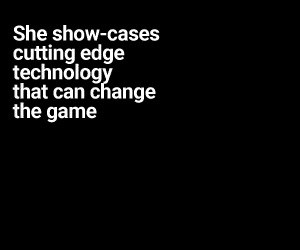Location: Bengaluru
Company: Nexstem
Responsibilities
- Responsible for the design, development, and support of new and existing hardware products.
- Manage the design process from conceptual design, parts selection, design simulation, detailed design, and schematic capture, to PCB design rules creation.
- Coordinate with layout teams to ensure adherence to guidelines during PCB design and manufacturing.
- Lead prototype builds with contract manufacturers and manages product bring-up, debugging, and verification.
- Testing and Support:
- Execute test protocols, document results, and provide feedback for improvement of existing products.
- Support environmental testing and entry into production phases for hardware systems.
- Provide on-site support for customer-related activities, including demos, training, installation, and troubleshooting field issues.
- Cross-Department Collaboration
- Collaborate with software, mechanical, and other departments as part of daily board design practices to maintain inter-departmental communication.
- Work closely with the design and layout teams to support board layout, system bring-up, and verification.
- Involved in customer-facing activities such as demos, installation, and field issue resolution.
- Continuous Innovation
- Be an integral part of the Hardware Design Team, driving new ideas for product development and offering feedback to improve existing systems.
Requirements
- Technical Expertise
- Proven experience in designing ultra-low-noise analog front-ends and precision analog circuits.
- Deep knowledge of mixed-signal system design, including both analog and digital subsystems.
- Strong understanding of electronic hardware, circuit theory, and electronic components such as MOSFETs, transistors, ADCs, DACs, filters, and feedback systems.
- Experience in power electronics, including power supply architecture design and regulation.
- Expertise in analog and digital circuit design, including microcontrollers and communication protocols like UART, SPI, I2C, I2S, CAN bus, RS232, Ethernet etc.
- Proficiency in PCB design tools (e.g., Altium) and high-speed schematic capture.
- Skilled in circuit simulation and modeling tools, including LTspice, TINA, MATLAB/Simulink, and PSpice.
- Hands-on experience with lab equipment such as multimeters, oscilloscopes, spectrum analyzers, power supplies, and protocol analyzers.
- Solid grasp of sensor interfaces, signal conditioning, and analog-to-digital conversion (ADC) techniques.
- Ability to read and interpret schematics, wiring diagrams, datasheets, and technical documentation.
2. Design and Testing Knowledge
- Experience with design-for-manufacturing (DFM) and design-for-testability (DFT) best practices.
- Skilled in signal quality verification (SNR, THD, CMRR) and data fidelity validation using precision instruments.
- Knowledge of EMC/EMI design practices, compliance testing, and certification standards such as IEC 60601-1 and medical-grade safety.
- Familiarity with product certification processes and working with EMC/Safety labs for regulatory readiness.
- Prior experience in environmental qualification, stress testing, and failure analysis (HALT/HASS is a plus).
- Ability to troubleshoot embedded systems, analyze test failures, and support documentation of layout/test procedures.
3. Communication and Collaboration
- Strong written and verbal communication skills with the ability to clearly convey design ideas and technical concepts.
- Effective collaboration with cross-functional teams (software, mechanical, layout engineers).
- Ability to work independently on complex hardware design tasks with minimal supervision.
Additional Skills
- Knowledge of C programming is a plus.
- Experience with analog/digital video interfaces is an advantage.
- Prior work on wearable or portable electronics, particularly in human-interface systems like BCI (Brain-Computer Interfaces), is highly desirable.

